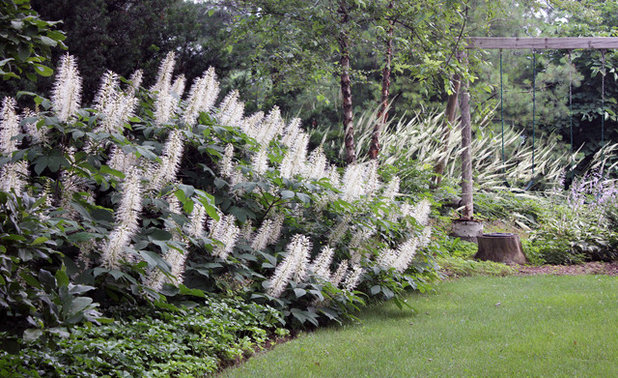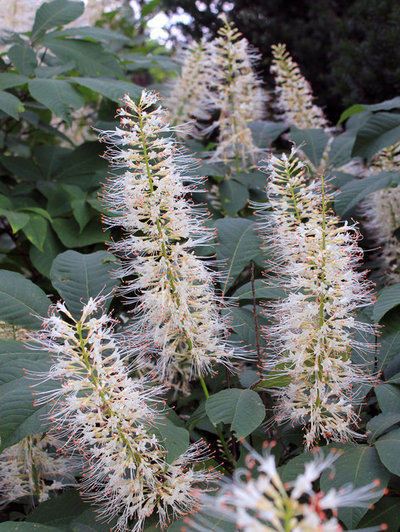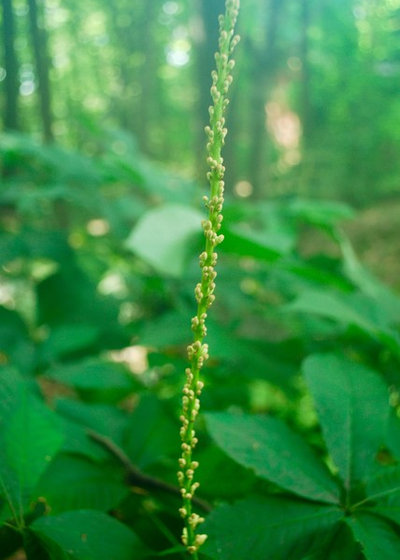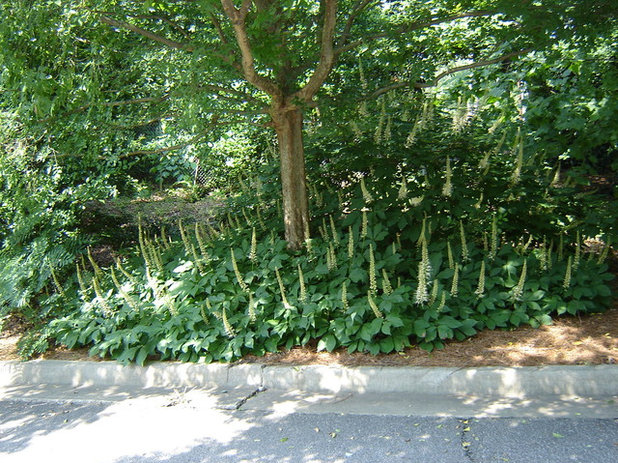I’ll be the first to admit that I’m a pushover for large, textural, palmate foliage. In the woodland garden, large leaves stand prominently in contrast to the smaller foliage of ferns, astilbe and bugleweed. Like large solar panels, they search for and absorb any dappled sunlight that makes its way through the forest canopy, transforming it into precious food for maximum growth. It is a special thing, however, when such a plant bursts forth with unexpected summer spires of flowers that are reminiscent of Independence Day fireworks. Such it is with bottlebrush buckeye (
Aesculus parviflora). Plant one of these southeastern U.S. native shrubs and watch it set your shade garden aglow with a feeling of summer celebration.
Not in the Southeast? Browse plants native to other regions of the U.S.

Enroot Landscape Planning and Design
Botanical name: Aesculus parvifloraCommon name: Bottlebrush buckeye
Origin: Native to shady, moist ravines in the southeastern United States
Where it will grow: Hardy to -20 degrees Fahrenheit (USDA zones 5 to 9; find your zone)
Light requirement: Partial sun to light shade; may scorch and wilt in full sun
Water requirement: Average to moist soil
Mature size: Up to 12 feet tall and wide
Caution: The leaves and seeds are toxic if ingested.

Enroot Landscape Planning and Design
Benefits and tolerances: This native plant is adaptable to a wide variety of conditions on the edge of the forest; it spreads slowly by suckers to establish colonies but is easily contained with annual maintenance. This buckeye is deer resistant and more tolerant of insects and diseases than other buckeyes; additionally, it holds its foliage later into autumn than most other buckeyes.

Jay Sifford Garden Design
Seasonal interest: Light green, very textural palmate foliage that resembles closed umbrellas emerges in midspring; flower inflorescences begin to emerge by mid-June, with flowering commencing in July. The flowers are white with pink stamens and red anthers; they are followed by the production of nuts that are enclosed in yellow flesh. In autumn the leaves turn a golden yellow before the plant becomes dormant for the winter.
When to plant: Spring or fall

Botanica Atlanta | Landscape Design-Build-Maintain
Distinguishing traits. This large, mounding shrub is different from most other buckeyes, which are larger and more tree-like in structure. Its flower spikes are upright, with flowers spaced evenly around the stem. Inflorescences average 12 inches in length.
How to use it. Planting several bottlebrush buckeyes in a grouping along the edge of the woodland garden makes a statement. Single specimens can be tucked into shaded courtyards. Although this plant will bloom in full shade, it reaches its flowering potential when it receives several hours of morning sun.
Planting notes. Site bottlebrush buckeye in light shade or in an area that receives several hours of morning and afternoon shade. Amend the soil with compost, as this plant prefers loose, rich, moist but well-drained soil. Water twice weekly until well established.





